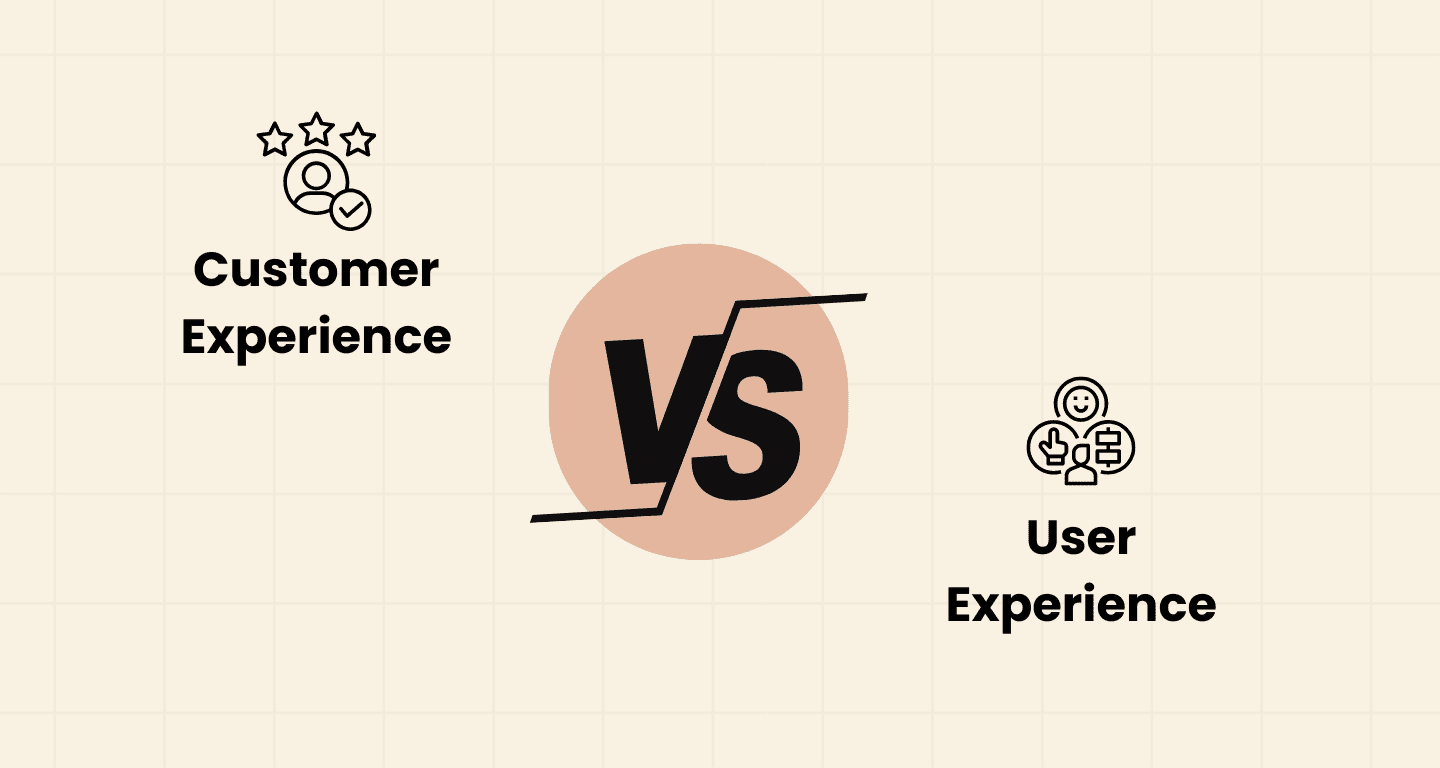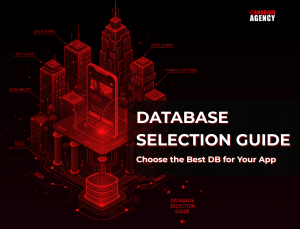The way people around the world connect with brands has changed. Just having a great product isn’t enough anymore. It’s all about the overall experience—the feelings, simplicity, and satisfaction customers get from every interaction. And that’s where understanding the strategic importance of Customer Experience (CX) and User Experience (UX) becomes crucial. Even though both are about giving value to the customer, they approach it from different angles. This understanding empowers you to update your approach and meet the diverse needs of your audience, making you an integral part of your company’s success.
What is Customer Experience?
CX, or consumer experience, is how a customer feels about a brand. It’s not just about buying stuff, but the journey from the first time they hear about the brand to after purchase. It’s like the overall vibe they get from every interaction with the company, whether online, talking to someone from customer service, or even looking at the product packaging. It’s like building and keeping a good relationship with your customers. Understanding what customers want, fixing any problems, and making sure every time they interact with the brand it leaves a good impression.
What is User Experience?
In simple terms, customer experience (CX) is all about a customer’s overall experience with a brand, including every interaction and touchpoint they have with the company. On the other hand, user experience (UX) is more specific. It’s about user experience when interacting with a product or service, especially in a digital environment. UX ensures a product is easy to use, meets user needs, and provides a consistent experience. While CX looks at the entire customer journey, UX focuses on how users engage with a specific part of that journey, like a website, app, or physical product.
Customer Experience vs. User Experience
The main difference between CX and UX is their scope. CX covers the overall customer experience, while UX focuses on specific interactions along that journey. For instance, a customer might have a great experience with your brand because of incredible customer service (CX). Still, if your website could be more complex to navigate (UX), it could leave a better impression. UX is a part of the whole CX. However, both are important to ensure customers choose your brand and stick with it.
Target Audience
Customer Experience (CX) concerns anyone interacting with a brand, whether current customers, potential buyers, or even influencers. The goal is to create a consistently positive impression across all channels and build long-lasting relationships.
Whereas User Experience (UX) is more specific, targeting the actual users of a product or service. It’s all about making sure their interactions with the product are smooth, efficient, and enjoyable. Unlike CX, which is broad, UX focuses on understanding individual users’ unique needs and preferences.
CX and UX specialists play a crucial role in ensuring customer satisfaction in every interaction with the company. CX professionals concentrate on the overall customer experience, from the first touchpoint to post-purchase, ensuring that every interaction leaves a positive impression. On the other hand, UX professionals focus specifically on the experience with the product or service provided, ensuring that it is intuitive, efficient, and enjoyable for the user.
Metrics & Measurements
In Customer Experience and User Experience, data-driven insights play an indispensable role in strategic decision-making. These precise metrics and measurements offer a window into the customer’s perspective, revealing what’s working, what needs improvement, and how close you are to achieving customer delight. Armed with these insights, you are well-informed and equipped to make decisions that enhance the customer journey.
Customer Satisfaction (CSAT)
It measures customer satisfaction with their experience. By monitoring this stat through surveys, businesses get quick feedback on what’s working and what’s not. A good CSAT score means happy customers and shows the customer experience is on point. By regularly checking and acting on CSAT data, businesses can improve their methods to ensure that every interaction leaves customers happy.
Customer Satisfaction (CSAT) in UX measures how well your product matches customer expectations. CSAT captures users’ instant reactions after engaging with your interface, providing a snapshot of their experience. A high CSAT score indicates that your design is intuitive, fluid, and serves its intended function. This statistic is critical for UX teams since it shows areas of success and exposes possible issues, allowing for continual improvement. In a word, CSAT in UX is your real-time scorecard for user pleasure and engagement.

Net Promoter Score (NPS)
Net Promoter Score (NPS) is a crucial customer loyalty and satisfaction indicator. It measures the likelihood of customers recommending your brand and provides valuable insights into their overall experience and trust. A high NPS indicates strong relationships, while low scores highlight areas for improvement. By using NPS, organizations can understand their customer base and drive strategic adjustments to support loyalty and growth.
The Net Promoter Score (NPS) measures user loyalty by asking, “How likely are you to recommend our product to others?”. It classifies users as promoters, passives, or critics, indicating user satisfaction. A high NPS suggests strong user advocacy and contentment, while a low score highlights areas that need improvement. In the user experience (UX) realm, NPS aids in assessing user sentiment, giving you a clear and confident understanding of how users feel about your product or service.
Customer Retention Rate
Customer Retention Rate (CRR) shows how well your brand retains customers, reflecting the success of your overall customer experience strategy. High retention rates demonstrate satisfied and engaged customers, indicating that your brand has established value and loyalty. Prioritizing customer satisfaction and constantly enhancing touchpoints can convert one-time buyers into lifelong advocates.
It signifies the effectiveness of your product or service in engaging and retaining its target audience over time. High retention rates indicate an exceptional user experience exceeding user expectations, conveying that your offering delivers value and satisfaction consistently. By prioritizing interactions, intelligent design, and ongoing enhancements, you can transform transient users into loyal advocates, driving long-term growth and success.
Customer Lifetime Value (CLV)
Customer Lifetime Value (CLV) is the total income a customer will bring in during their time with your brand. Improving the user experience (UX) can boost CLV. A great UX keeps people returning and turns one-time buyers into loyal customers. Investing in top-notch UX not only brings in more money right away but also builds long-term loyalty.
Client Lifetime Value (CLV) is the total income a client will create while engaging with your company. It’s an essential statistic for determining the long-term effectiveness of your customer experience efforts. A high CLV demonstrates excellent customer loyalty and happiness, indicating the effectiveness of your CX activities. Concentrating on increasing CLV allows you to invest in more profound, more profitable client connections.
Focus Areas
- Omnichannel Engagement ensures a consistent experience whether customers are online, in-store, or on social media, so they feel the brand vibe everywhere.
- Personalized Experiences: Customizes interactions and suggestions to make customers feel unique and valued.
- Proactive Support: Stays one step ahead by anticipating needs and addressing any issues before they become problems to show customers you care about their happiness.
- Intuitive Design: Creating simple interfaces ensures smooth and frustration-free user interactions.
- Information Architecture: Organizing content allows users to find what they need quickly, improving usability.
- Interaction Design: Interactive elements should respond appropriately to user inputs for engaging interactions.
- Usability Testing: Regular testing with real users identifies design faults and opportunities for improvement, ensuring usability and satisfaction.
Areas of Responsibilities
- Journey Management: Oversee the customer journey, ensuring seamless interactions at every touchpoint.
- Support Excellence: Provide high-quality customer support and timely resolutions.
- Brand Consistency: Maintain a consistent brand message across all channels.
- Design and Usability: Create intuitive, user-friendly interfaces that enhance interaction.
- Interaction Design: Ensures smooth, engaging interactions with interactive elements.
- Performance Optimization: Optimize product performance for speed and reliability.
- Accessibility: Design inclusive features that meet accessibility standards for all users.
Client Base Coverage
Customer Experience (CX) is about creating a seamless journey that engages clients at every stage of their interaction with your brand. From initial contact to post-purchase support, CX encompasses all touchpoints where clients engage with your business. The goal is to build a broad client base by ensuring every experience is personalized, meaningful, and tailored to individual needs. By focusing on a holistic view, businesses can create strategies that address diverse client needs, preferences, and expectations, leading to stronger relationships and increased loyalty.
User Experience (UX) takes a more focused approach, concentrating on user interactions with your product or service. Effective UX design ensures that each touchpoint within the product is intuitive, user-friendly, and aligns with users’ expectations. By optimizing these interactions, businesses can attract and retain a dedicated user base, enhance satisfaction, and foster long-term engagement.
Conclusion
CX and UX have distinct qualities and focal areas, yet they complement each other. A strong UX can enhance the overall CX by optimizing specific touchpoints, while a well-crafted CX strategy can elevate the UX. Together, they can foster customer loyalty and improve your bottom line. Understanding and enhancing CX and UX is crucial for every organization in today’s competitive market.




